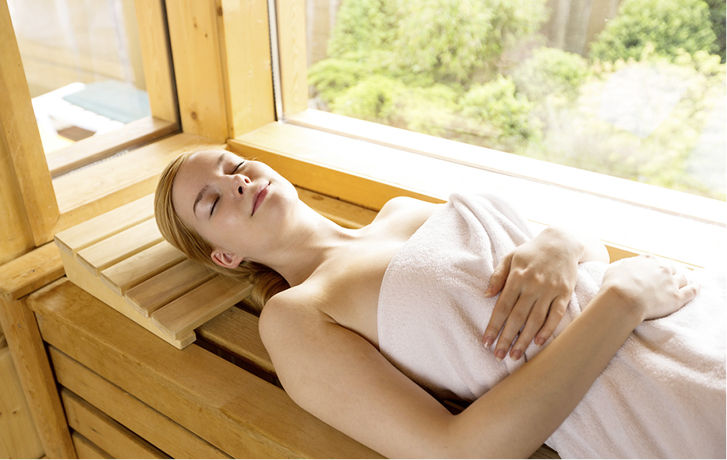Leading institute for windows (IFT Rosenheim) has published an article in Glaswelt magazine, where they sum up the characteristics of wood used in saunas (interior or exterior wooden elements). A short overview is available below.
The wood built into the sauna must be resistant to:
• High temperature inside (Tin)
• High difference between inside and outside temperature (ΔT)
• High relative humidity (RH%)
Different types of sauna require different relative air humidity (RH%) and different temperatures (T).

In Turkish saunas, wood is not used due to high relative humidity in the room. The room usually has no windows, if there are windows, they need to be made of PVC or metal frames.

Wood used in saunas must be free of resin, knots and cracks (especially for sitting and laying surfaces). Therefore, most commonly used wood species are: abachi, alder, aspen, hemlock, spruce, fir, red cedar and thermally modified wood. Wood in the interior should be carefully polished, unprotected and unpainted. Additional, uneccessary cuts, grooves should be avoided, since they lead to dirt and moisture retention. The use of essential oils have no effect on the selection of wood. In order to make the look of the saunas as uniform as possible, the same types of wood are usually used for windows in saunas as for interior furnishings. The most commonly used window wood species are: hemlock, spruce, fir and red cedar.
If it is desirable to use PVC windows, these temperature-resistant ones, which contain additional reinforcements to prevent excessive stretching of the profiles, should be used. The windows in the saunas have normally fixed glazing, and the glass on the inside of the windows and doors must be tempered (ESG). If there are openable windows desired, care must be taken of the choice of fittings, which must be resistant to high humidity, in the case of salt rooms, also to salt corrosion. The latest could be prevented by using stainless steel fittings. Installation of windows in the sauna must be carried out with materials that are vapor-sealed on the inside, vapor-permeable and waterproof on the outside, airtight and temperature-resistant.
Depending on the requirements of the sauna, we must also choose the appropriate sound insulation of the window and its installation. However, the windows should not be installed in the immediate vicinity of the sauna’s heating system (oven).
As always, wood in saunas should be selected with care and knowledge, to be able to offer pleasant and relaxing moments for many people over the decades of its usage.

Photos: Glaswelt, may 2018
Article source: Es muss funkrtionieren – dauerhaft, Glaswelt, May, 2018


